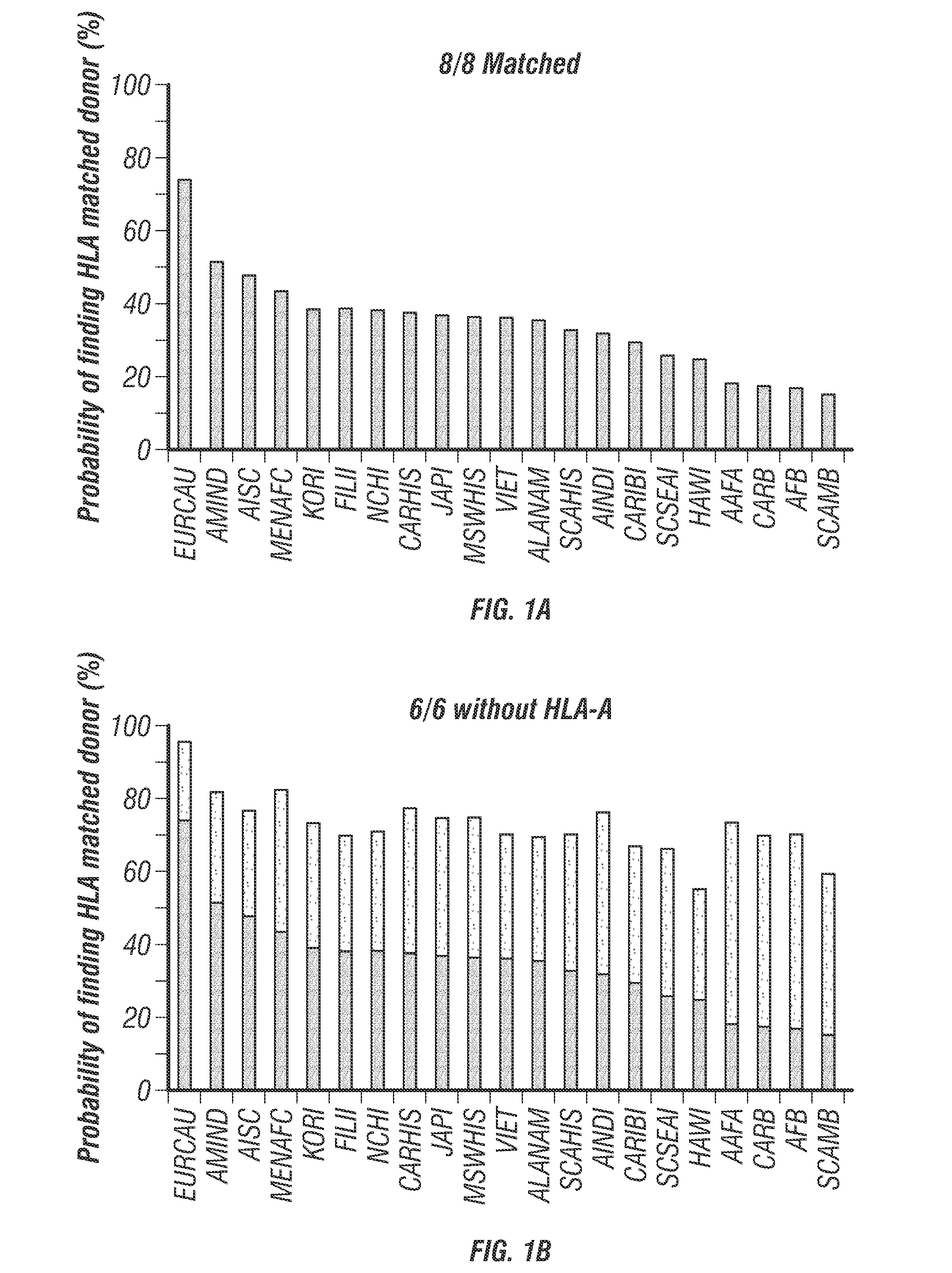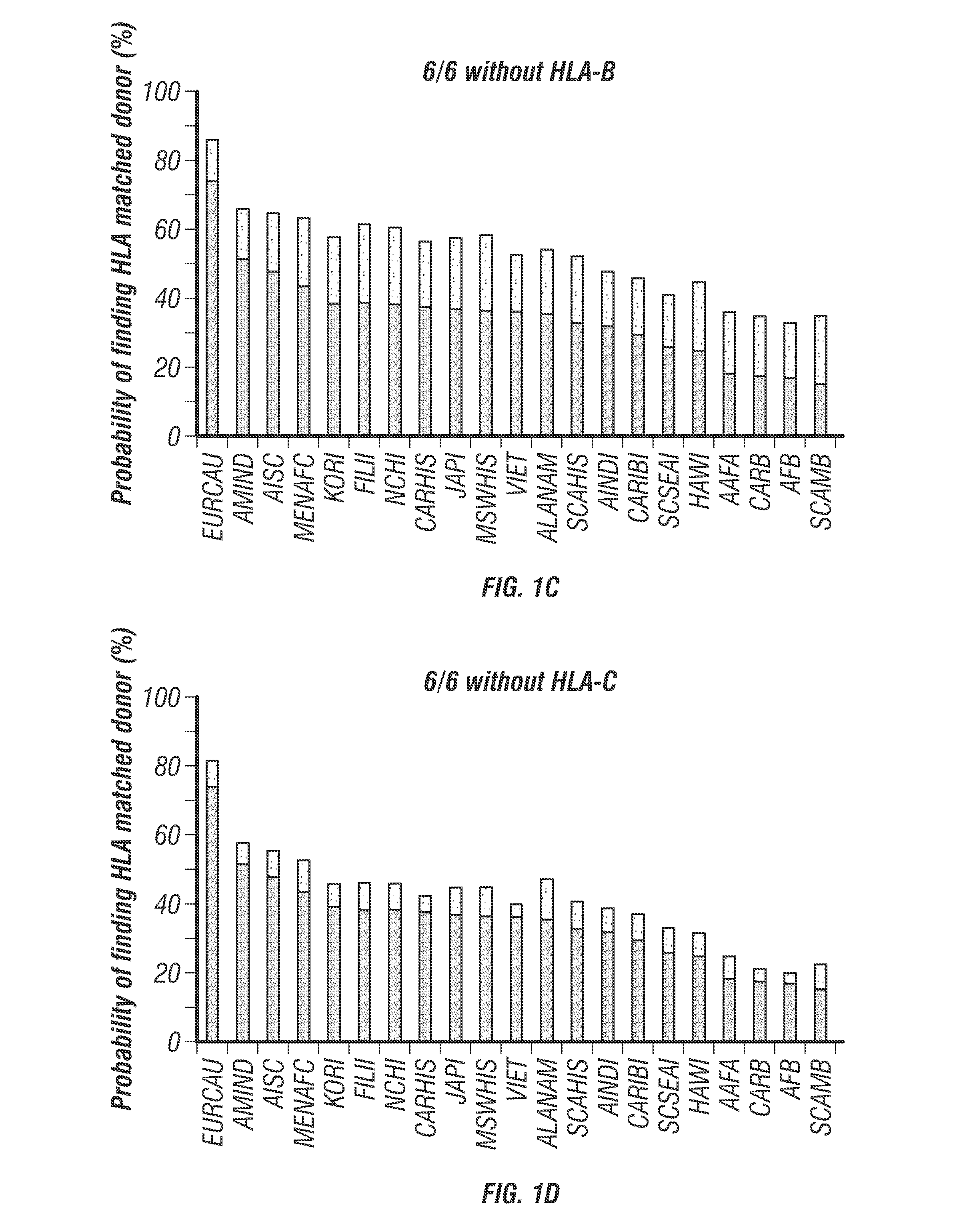Application of induced pluripotent stem cells to generate adoptive cell therapy products
a technology of pluripotent stem cells and products, applied in the field of medicine, cell biology, molecular biology, can solve the problems of difficult to find a suitable hla-matched product, sometimes functionally flawed autologous cells, and many recipients' difficulties in finding suitable hla-matched products
- Summary
- Abstract
- Description
- Claims
- Application Information
AI Technical Summary
Benefits of technology
Problems solved by technology
Method used
Image
Examples
example 1
Generation of HLA-Aneg Hematopoietic Stem Cells
[0208]The clinical use of registered NMDP donors could be markedly increased if allogeneic HSCs were genetically edited to eliminate expression of the HLA-A locus. Engineered zinc finger nucleases (ZFNs) (or any artificial nuclease, e.g., TALEN, CRISPR / Cas9) can be used to eliminate HLA-A expression in genetically edited T cells and cell lines. To extend genetic editing to hematopoietic stem cells (HSCs), HLA-A expression was disrupted by introducing ZFNs targeting this locus. CD34+ lineageneg HSCs (99% purity) were isolated from umbilical cord blood (UCB) by first depleting lineagepos cells using a mixture of biotinylated anti-human antibodies against CD2, CD3, CD11b, CD14, CD15, CD16, CD19, CD56, CD61, and CD235a (Glycophorin A) and depleting using biotin-binding paramagnetic beads. Next, CD34+ cells were isolated using anti-CD34 magnetic beads. Electro-transfer of in vitro-transcribed mRNA species encoding the HLA-A-specific ZFNs gen...
example 2
Generation of HLA-Aneg iPSC
[0209]One way to minimize the number of donors needed may be the elimination of one HLA locus from an HLA-homozygous donor. It has been determined that HLA-A elimination from donor cells may have a significant impact on the chance of finding suitable HLA-matched donors (FIG. 1). Therefore, elimination of HLA-A expression from HLA homozygous donors will decrease the needed number of banked iPSCs that can be infused into HLA-matched patients. Further elimination of endogenous TCR αβ and γδ expression, which causes unwanted allogeneic immune reaction, may be performed to reduce graft-versus-host disease. The iPSC can be further modified to express a suicide gene (e.g., iCasp9, inducible caspase 9) to secure safety of allogeneic iPSC therapy for disease and regenerative medicine. iPSC clones will be isolated that have the “safe harbor” genetic profile (Papapetrou et al., 2011, incorporated herein by reference) as assayed by whole genome sequencing and integrat...
example 3
Reporter Gene Mediated Screening of Potential Off-Target Toxicity of Immune Receptors
[0224]Adoptive T-cell therapy using immune receptors targeting tumors has been emerging in the clinic due to its potential to eradicate tumor cells. However, a major concern for redirecting immune cell specificity to a tumor is the unintended and unpredictable off-target toxicities, which have been observed in patients who received “tumor-specific” adoptive cell therapy (Cameron et al., 2013; Morgan et al., 2010). The current methods to predict tissue distribution of target antigens based on the detection of gene or protein expression in tissue panels are not enough to predict these toxicities. To overcome this issue and improve the identification of potential off-target toxicities, the inventors will screen specificities of immune receptors using iPSCs and / or iPSC-derived differentiated cells. First, iPSCs will be generated from healthy donor cells and endogenous HLA expression will be eliminated b...
PUM
| Property | Measurement | Unit |
|---|---|---|
| time | aaaaa | aaaaa |
| mean fluorescence intensity | aaaaa | aaaaa |
| Phase | aaaaa | aaaaa |
Abstract
Description
Claims
Application Information
 Login to View More
Login to View More - R&D
- Intellectual Property
- Life Sciences
- Materials
- Tech Scout
- Unparalleled Data Quality
- Higher Quality Content
- 60% Fewer Hallucinations
Browse by: Latest US Patents, China's latest patents, Technical Efficacy Thesaurus, Application Domain, Technology Topic, Popular Technical Reports.
© 2025 PatSnap. All rights reserved.Legal|Privacy policy|Modern Slavery Act Transparency Statement|Sitemap|About US| Contact US: help@patsnap.com



